Aosta Valley aside, Molise is Italy’s smallest region in terms of total area and population, and even remained part of Abruzzo until 1963. With its area made up from 55% mountains and 45% hills leading to the coastal strip, you get to experience drives and hikes across mountains and valleys. At the same time, Molise managed to retain its glorious nature and evidence of erstwhile cultures as Roman urbanisation advanced poorly here. Combining primeval elements, unusual castle constructions and enchanting spectacles of nature, the top 10 sights of Molise will certainly wow you.
Castello Pandone in Venafro
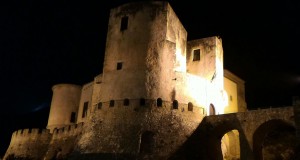
©Molise Turismo | www.moliseturismo.eu
The Lombards built the first tower high above the historic town centre of Venafro in the westernmost part of Molise. Spaniard Francesco Pandone, Earl of Venafro, gave the castle today’s Renaissance look in mid-15th century. A look inside will probably have you wonder about his odd taste. 26 life-size horse pictures line the walls. The Castello rooms are also home to Museo Nazionale del Molise, where paintings from abandoned and discontinued churches have found another home.
Santuario dell’Addolorata in Castelpetroso
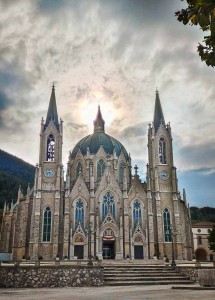
©Molise Turismo | www.moliseturismo.eu
Virgin Mary appeared to believers in the region Cesa tra Santi in Castelpetroso on 22 March and 1 April 1888. Many other appearances would follow right until the 1970s, but a miracle in November 1888 that saw the cure of a 12-year-old suffering from bone tuberculosis led to the construction of a church, which took 87 years. Today Santuario dell’Addolorata wildly rises high forming a fascinating scenic symbiosis with the surrounding mountains due to its pointed, jagged façade.
WWF nature reserve Guardiaregia-Campochiaro
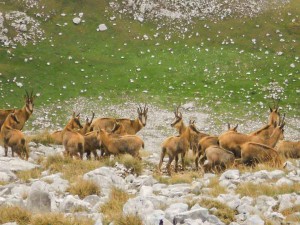
©Molise Turismo | www.moliseturismo.eu
A nature reserve curated by the WWF on a current total of 3,135 hectares was installed in 1997. It protects the picturesque region of Guardiaregia-Campochiaro and its natural diversity between mountains and valleys. The reserve is known for its richness in species. Wolves have found a home here as have spectacled salamanders, the symbol of Guardiaregio-Campochiaro. Wander through the reserve on many paths, such as the comfy hiking trail San Nicola leading you past gorges and falls in 90 minutes. If you’re lucky, you might even see birds of prey circling above you.
Abbey of San Vincenzo al Volturno
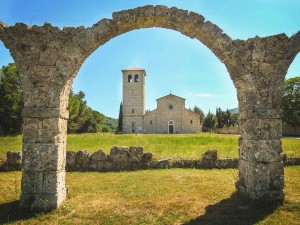
©Molise Turismo | www.moliseturismo.eu
A church built mid-5th century near the river Volturno in the municipality Castel San Vicenzo became one of the most beautiful abbeys in Molise. Destroyed multiple times and rebuilt painstakingly, today’s San Vincenzo al Volturno is home to an order of Benedictine nuns from Connecticut. All around you see the ruins of several previous buildings that have since been turned into a huge archaeological excavation site of sorts. New aspects of the millennia-old history of the region, which had already been populated by the Samnites in pre-Christian times, are discovered continuously. You must have seen it to believe it!
Castello Svevo in Termoli
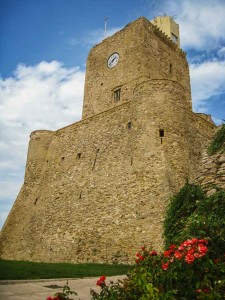
©Molise Turismo | www.moliseturismo.eu
A fairly weirdly shaped tower castle looms large at Termoli’s coast. Sadly, Castello Svevo looks incomplete, partly because it was heavily damaged during attacks by the Venetian fleet in early 13th century before being restored and reinvented by Emperor Fredrick II, partly because a severe earthquake caused substantial damage resulting in even more renovations. Even though the parapet walk of the high, square tower is missing, its uniquely sloped shape alone with unusual miniature round bastions makes the Castello a truly special sight.
Fontana Fraterna in Isernia
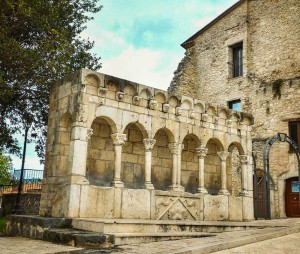
©Molise Turismo | www.moliseturismo.eu
Even sights are recycled in Isernia, capital of the province of the same name and also Molise’s third-largest city. The public fountain Fontana Fraterna was built from Roman and Romanesque materials and completely refurbished in 1835. Six water fountains surrounded by unusual arcade constructions are protected by various structural layers. If you look a little bit closer, you should recognise Roman flower motifs, godly epigraphs and references to the fountain’s construction period.
Termoli Cathedral
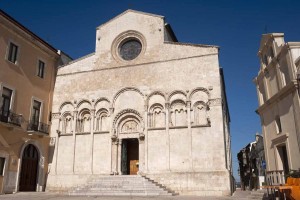
©Bigstock.com/Claudiogiovanni
Similar to many other ecclesiastical constructions in Molise, Termoli Cathedral can look back at an eventful history. With roots dating back to the 6th century, it had been severely damaged time and time again by earthquakes and Ottoman attacks, yet has always been restored. While the upper part of the façade is mostly unadorned, small pillars and figurines support the 22 m high building. The inside, too, impresses with its simple and clear design ever since the belatedly added baroque clutter has been removed during renovation works. The classic yet fascinating house of prayer still wows visitors to this day.
Parco delle Morge Cenozoiche del Molise
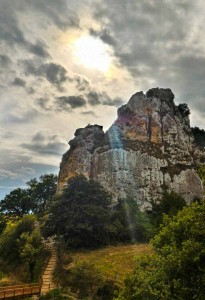
©Molise Turismo | www.moliseturismo.eu
During the geological era Cenozoic, approx. 66 million years ago and thus after almost all dinosaurs had become extinct, Europe and all other continents developed due to the upfolding of the Alps and the Himalaya. The Morge – enormous geological formations towering right in the middle of Molise’s hilly country – developed during this particular era, too. A special park is dedicated to the fantastic natural spectacle. Discover this fascinating region during a guided tour and explore old cave settlements and ritual places used for protection and spiritual contemplation. Hiking, biking, climbing and trekking – there virtually are new highlights every day between the ten park municipalities.
Campitello Matese
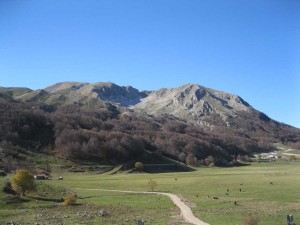
©Molise Turismo | www.moliseturismo.eu
The stretched geographical location of Molise not only allows you to enjoy a quiet beach holiday. You can even go skiing and snowboarding in winter in the west of the region. There was one single alpine hut for shepherds in all of Campitello Matese until the 1960s. Only one decade later the entire mountain region had been turned into 40 km of slopes. In summer you get to enjoy extensive hikes and mountain climbing tours in the Apennines with scenic beauties serving as your backdrop.
The Samnite theatre complexes of Pietrabbondante
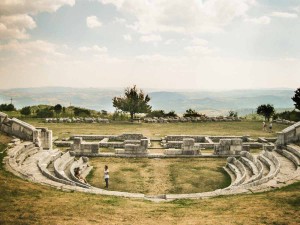
©Molise Turismo | www.moliseturismo.eu
Originally native to Campania’s coasts, the Samnites migrated further inland in the 2nd century BC settling in Pietrabbondante among other places. The municipalities weren’t urbanised by the Romans, which is why you still come across substantial evidence of the ancient Italic people eradicated in 82 BC. The sweeping theatre complexes are particularly awe-inspiring. Up to 2,500 spectators could be seated in the auditorium. Scientists believe that the complex used to serve as a Samnite meeting place.
Old populaces and new rulers, pilgrimage sites and reservations are waiting for you when rambling across the land. The top 10 sights of Molise introduce you to the small but nice region with all its diversity. Find even more suggestions for your next trip to Italy on ZAINOO!